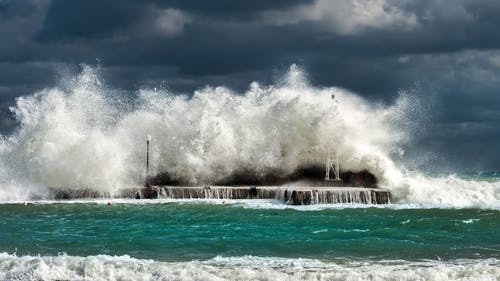Wind Damage and Wind Speed in the United States
When you’re thinking about the ways in which your home may end up with damage, there are many problems you could consider. Near the top is often wind damage. However, even if you’re thinking about wind damage, you may not know how truly damaging wind can be. Wind can seriously impact the structural integrity of your home in a variety of ways. Here’s what you need to know about wind damage and wind speed all across the United States, including how you can protect yourself.
The 20 Windiest Cities in the United States
Some people find particular interest in knowing more about the cities that have the worst wind problems overall. The National Oceanic and Atmospheric Administration has used the National Centers for Environmental Information to catalog wind-speed data from 1984 to 2018. By doing this for individual cities, they’ve been able to find some astonishingly high wind speeds. Here are the 20 windiest cities in the United States according to the NOAA.
- Mount Washington, NH: 35.7
- Dodge City, KS: 13.1
- Amarillo, TX: 12.9
- Cheyenne, WY: 12.3
- Goodland, KS: 12.1
- Rochester, MN: 12.1
- Clayton, NM: 12.1
- Lubbock, TX: 12.0
- Casper, WY: 12.0
- Corpus Christie, TX: 11.7
- Wichita, KS: 11.5
- Boston, MA: 11.5
- Great Falls, MT: 11.4
- New York, NY: 11.3
- Oklahoma City, OK: 11.3
- Wichita Falls, TX: 11.2
- Grand Island, NE: 11.2
- Fargo, ND: 11.1
- Galveston, TX: 11.1
- Concordia, KS: 11.0
You might note two interesting things on this list. First, Mount Washington is far and away the windiest city – it’s more than twice as windy as the second-windiest city. Second, Chicago, the so-called “windy city,” isn’t even on this list. That’s because Chicago’s natural wind speed is only 9.9 MPH on average. The city often feels much windier because of wind tunnels, which occur when the air is squeezed through the city streets.
Unique Problems: The Worst Wind Event in the United States
While average wind speeds are one thing, it’s not very common for the average wind speed in a city to pose a true problem. You’re much more likely to see problems with an extreme wind speed. The most extreme wind event in the United States was actually in Mount Washington, when scientists measured a 231 MPH wind in 1934. To this day, it’s the strongest-ever wind speed in the Western hemisphere.
Clearly, Mount Washington isn’t just renowned for its high wind speeds on average. It also has hurricane-force winds every day. That’s why the mountain itself rarely has any civilians on it. It’s mostly taken up by a research outpost, with the people who live around Mount Washington mostly living in its shadow.
Wind Problems and Property Damage
Even if you don’t live near Mount Washington, high winds can still do a lot of damage to your home. When you think of hurricane damage, you’re probably thinking mostly of flooding and storm surges, but these actually aren’t the only reasons you’ll experience issues with a hurricane. The hurricane-force winds that often come along with these can be even more dangerous both to people and to structures.
First and foremost, there are problems that can happen on the inside of the home. Wind will often compromise a weak spot of the home, which could be in the garage, in the basement, or through a window. From there, high-force winds can flow throughout the entirety of the home. This can create a wind tunnel through your home that can become so powerful it can tear your roof off.
It’s also a good idea to think about how wind damage can harm the outside of your home as well. Hurricane-force winds can tear branches off trees, then put those branches through your walls and windows. You may need to think about whether it’s a good idea to have trees in your yard at all. There are also other ways you can reinforce your home’s structure against wind damage if you live in a high-wind area.
Conclusion
There are some areas in the United States that are more prone to wind damage and some areas that are significantly less prone to wind damage. With about a quarter of all insurance claims stemming from wind damage in some way, it’s a good idea to take preemptive steps to avoid wind damage problems. Talk to a home repair specialist if you’re worried about wind damage to learn more about the ways you can avoid it.

